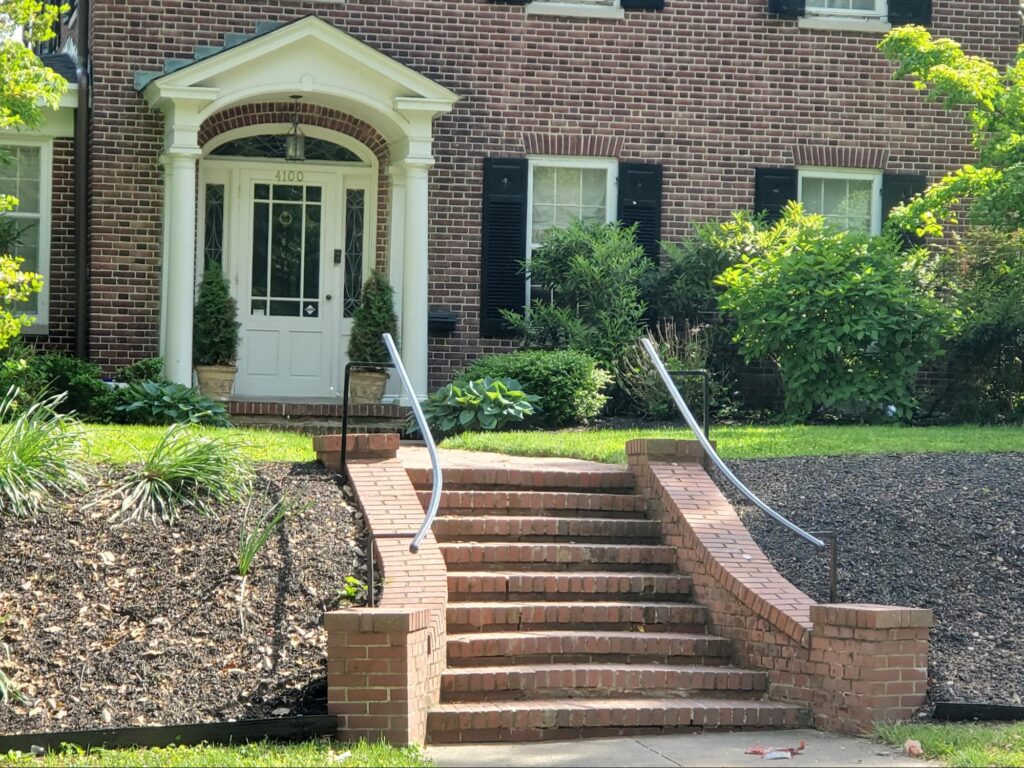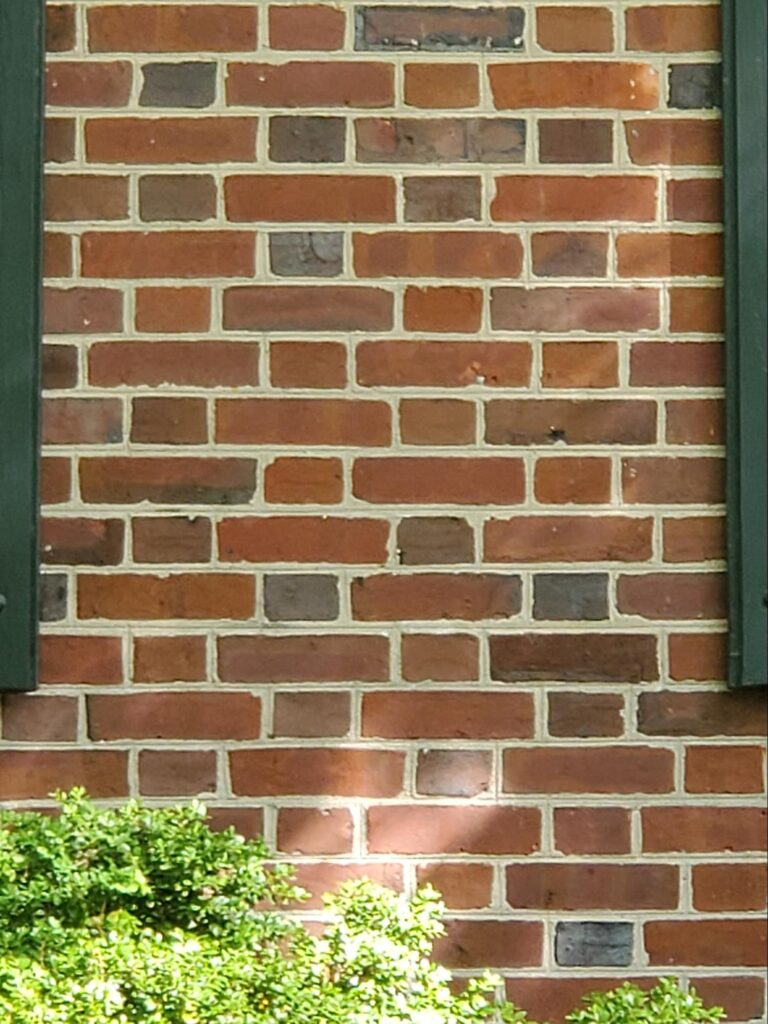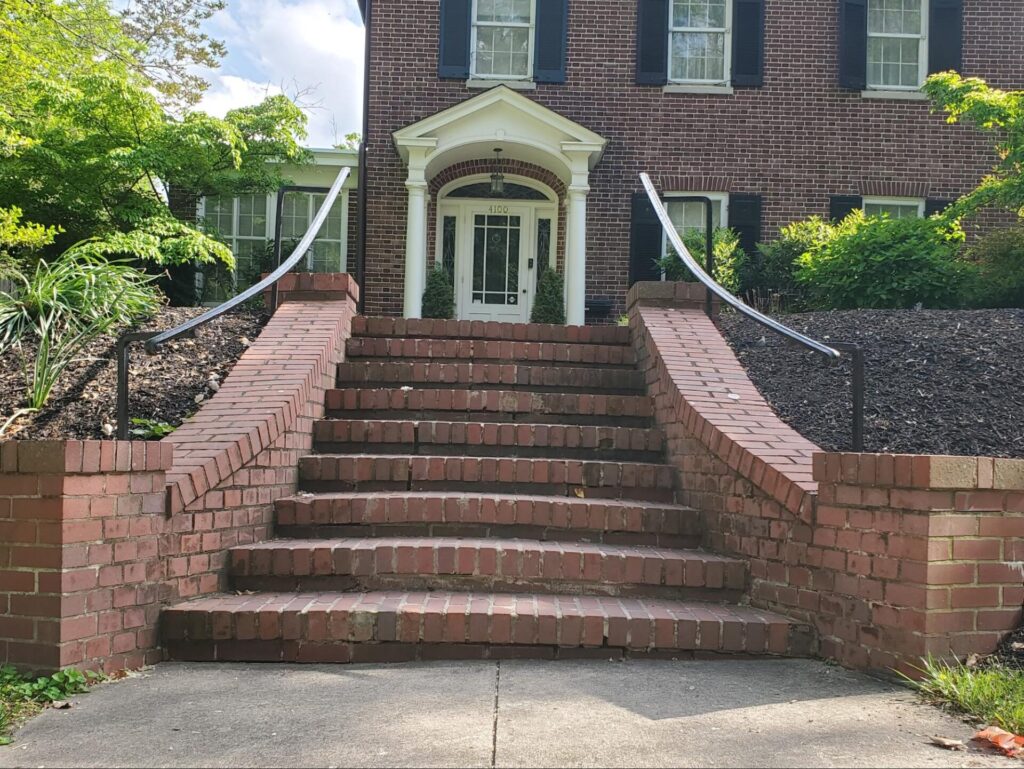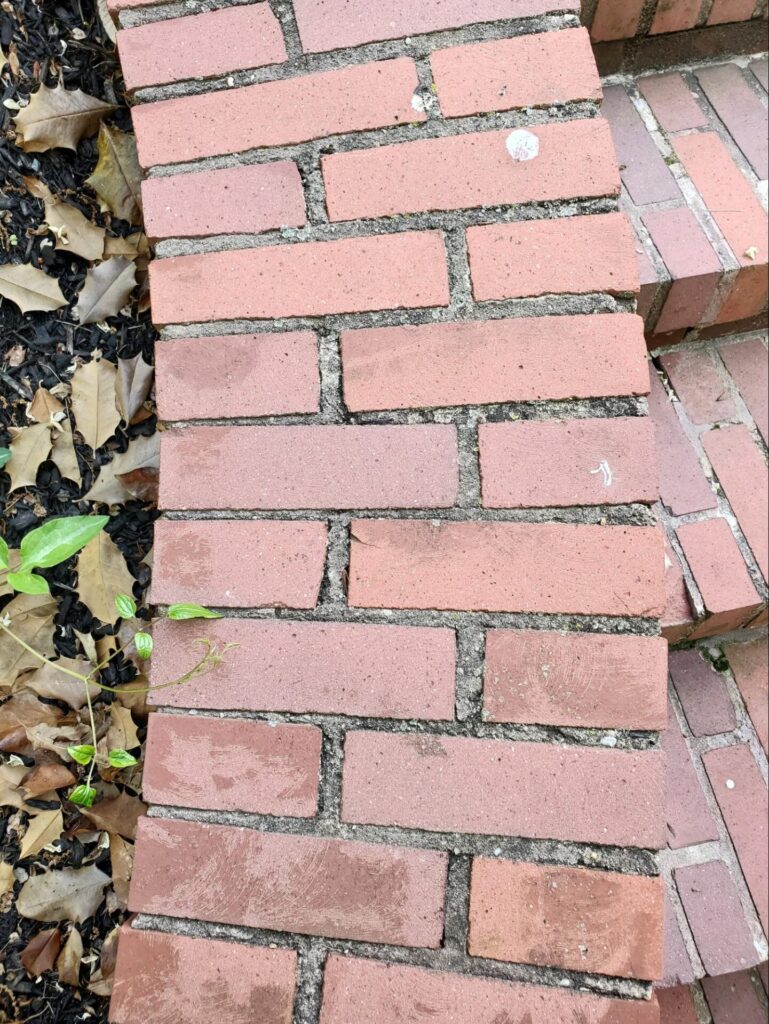See how flemish bond brickwork is used to beautify the exterior of a building
Today, we’re taking a closer look at a building and front hardscape built with kiln fired red clay brick. The front of the side of the building is built with a Flemish bond and a Jack arch header at each of the window openings. The entry portico is adorned with a timpanium and an arched ceiling, with a sheet copper clad roof.
Flemish bond brickwork alternates at every other brick, and each course is exactly the same, just offset by 1/2 brick width. Each alternating brick, varies between the header and the stretcher position within a course. Depending on the cube stacking in the original kiln firing, some particular buildings are built with bricks that have a higher level of vitreousness at the header end of the bricks, giving an alternating color pattern, like a checkerboard. Essentially, clay that is fired at a higher temperature will become more dense and will change color, generally becoming darker in color ranges of blue and purple, based on the temperature achieved in the firing process.
Bricks that are over exposed in the firing process will sometimes become so vitreous that they are similar to glass, on a molecular level, and will often warp or twist into a misshapen form. These bricks are called clinkers because when tapped with a hard object they make a distinct glass sound, due to their high density.
In some cases clinker bricks will be culled and discarded, but in other cases bricks of this type can be used for decorative purposes in the construction of a historic facade. A closer view of a Flemish bond brick pattern facade follows below.
There are many patterns of brick bonds common in Washington DC, yet the Flemish bond is often compared against the English bond. Both bonds are significantly common in historic rowhome construction, but the Flemish bond is generally considered to be more aesthetically beautiful and the English bond is considered to be structurally stronger.
The stairway side retaining walls are built with a taper and flare to widen at the lower end. The design is graceful, with a curvature that opens inviting pedestrians to come forward towards the building. Compared to a large institutional or commercial building, this is a very simple stairway, but designed an effective way to communicate a strong, classic, yet elegant layout.
At a glance though, it is apparent that the 2 different masonry construction elements, the front stairway and the front facade, were built at different times. The brick used in each individual construction is similar, but of a different make up. It’s likely that the facade brick is older than the stairway. Stairways and walkways often are damaged by underground plant root systems. In this case, the walls are stable, yet in others a slight lateral deflection or differential settlement is often observable in the retaining walls at the side of the stairway.
The construction of this wall is a triple wythe thickness. The cap brick is one and a half brick lengths in the stretcher position, with the cap extending slightly beyond the vertical face of the retaining wall.
Based on the estimated age of the building and brick walkway and stairway, we consider the brick and mortar to be in overall very good condition. Aside from typical upkeep needs related to repointing or brick tuck pointing, there It’s very little significant deterioration associated with age or damage. Mortar consistently deteriorates faster than the adjacent brickwork, in almost all types of brick construction assemblies. Tuck pointing or brick repointing is the process of removing aged and deteriorated motor at the outer wall facings and replacing that mortar with newer mortar of consistent or compatible characteristics of density and porosity, permeability, and strength. These particular characteristics are essential in the pointing and repointing or restoration process.
We encourage all of our clients, and all readers of this article and to our blog in general, to prioritize the historic built environment of Washington DC and neighborhoods such as Capitol Hill, Dupont Circle, and Georgetown and become educated on on the difference between proper historic preservation versus improper work which leads to significant damage to the historic fabric of a building.
From a conservation and preservation perspective, several approaches can be taken to improve conditions related to deteriorated historic brick masonry. Primarily, lime mortar brick joints and low temperature fired soft red clay bricks should be inspected and checked on a routine maintenance schedule, either seasonally or at least annually. If brick masonry is kept in good condition, the life of embedded wood elements can be significantly extended. Hire a professional contractor which specializes, understands and appreciates historic construction elements and buildings.
You can learn a lot more on our blog. Feel free to check it out. If you have questions about the historic masonry of your building in Washington DC, contact us or fill out the webform below and drop us a line. We will be in touch if we can help.




